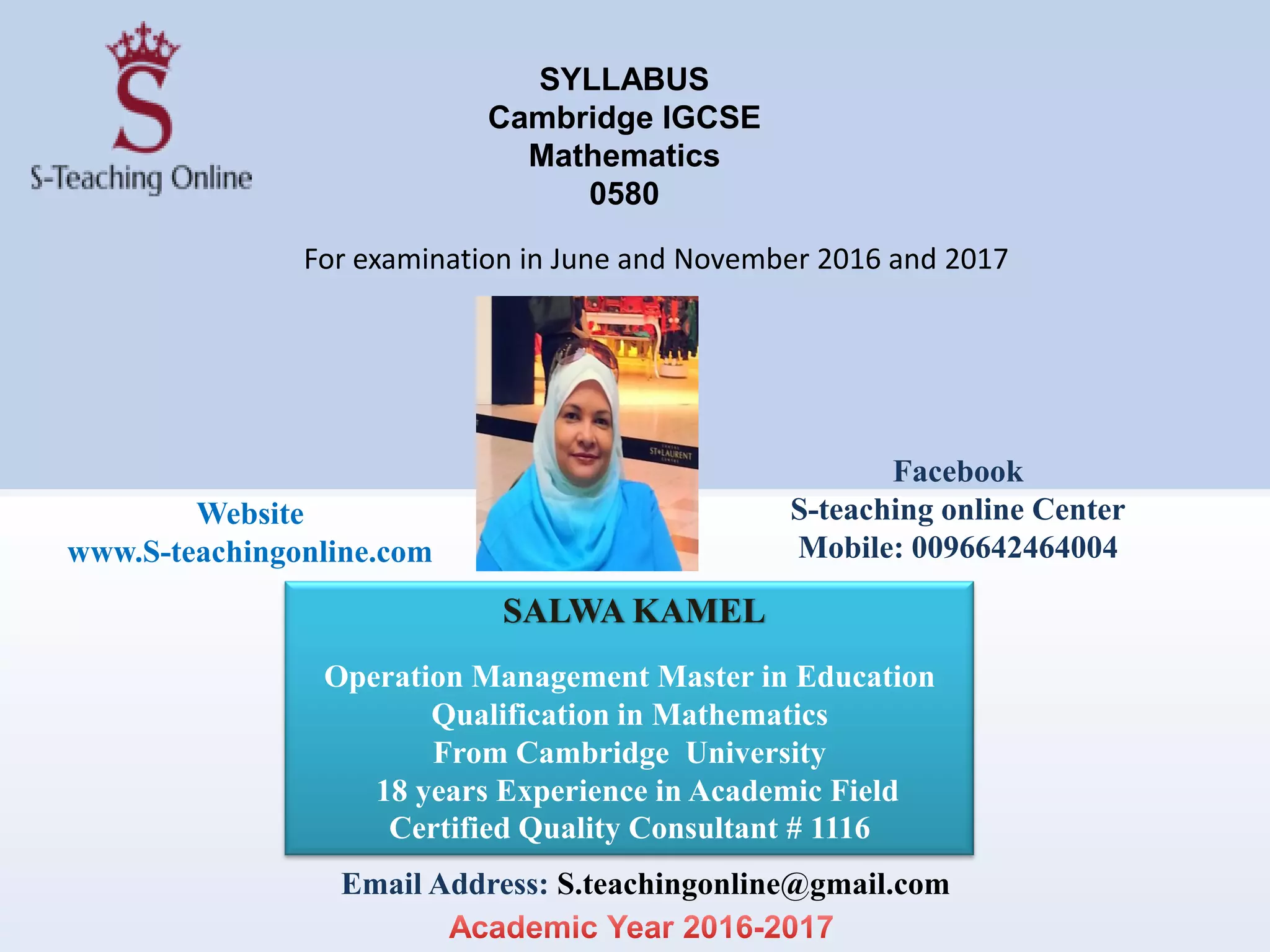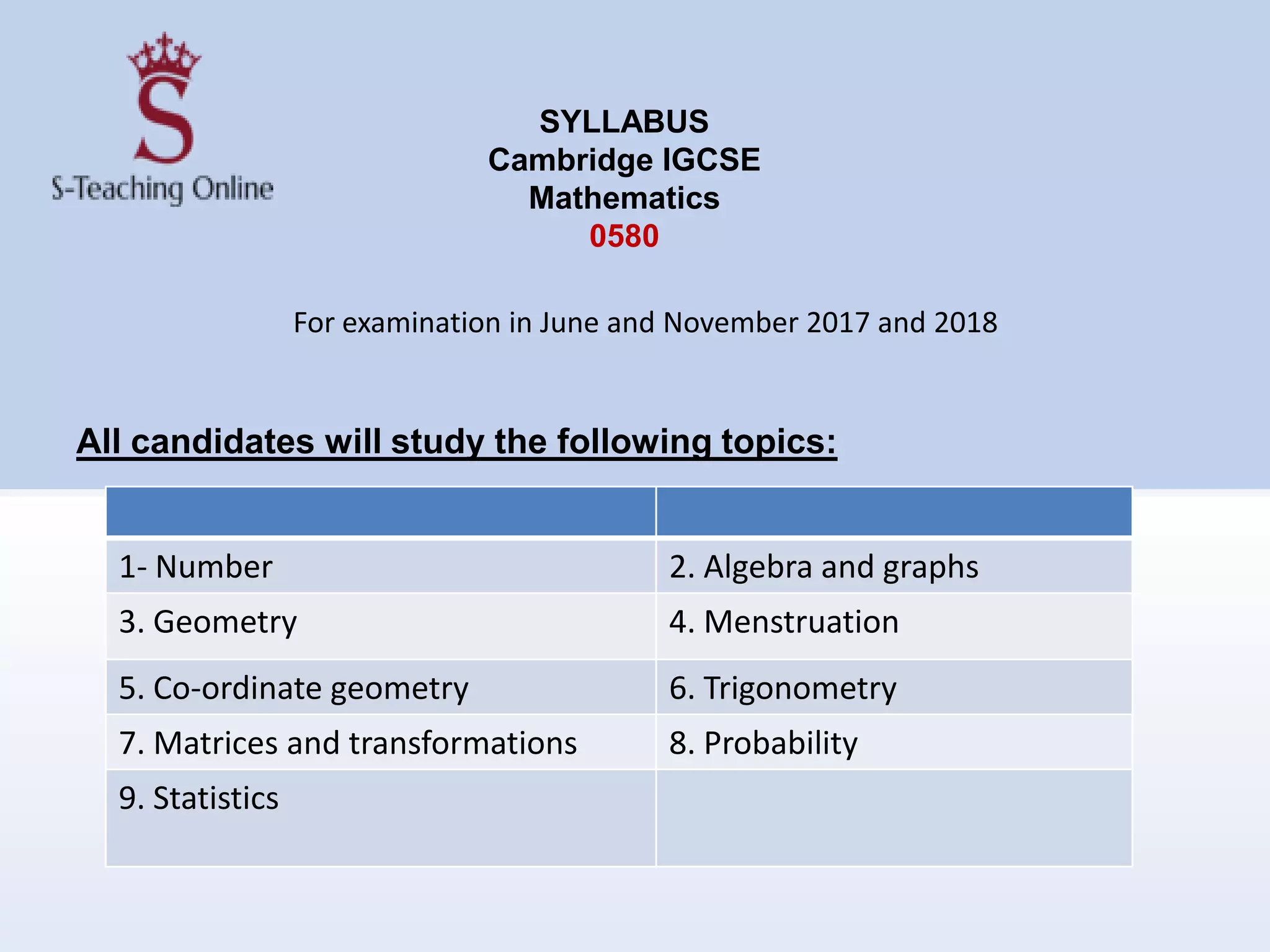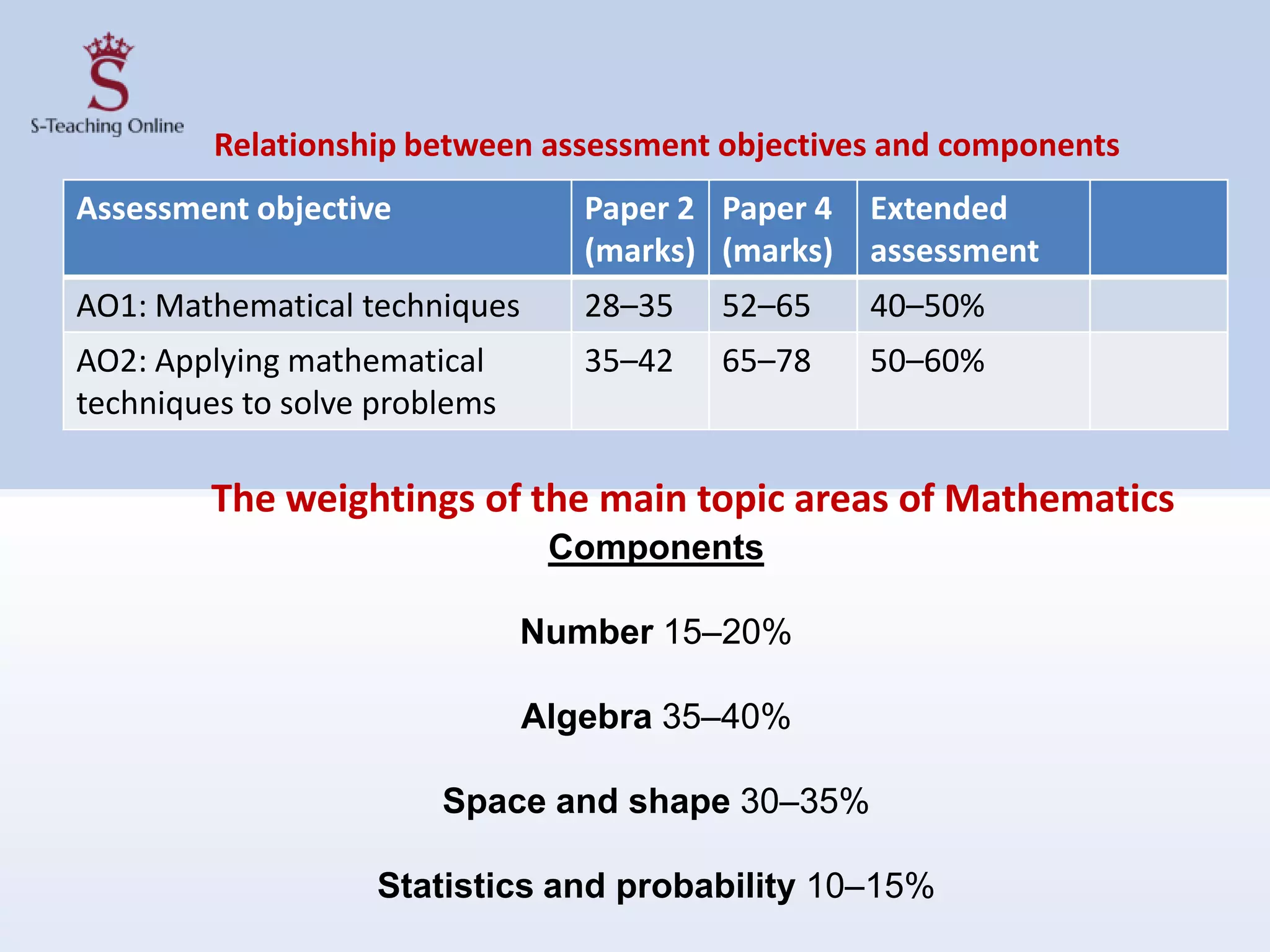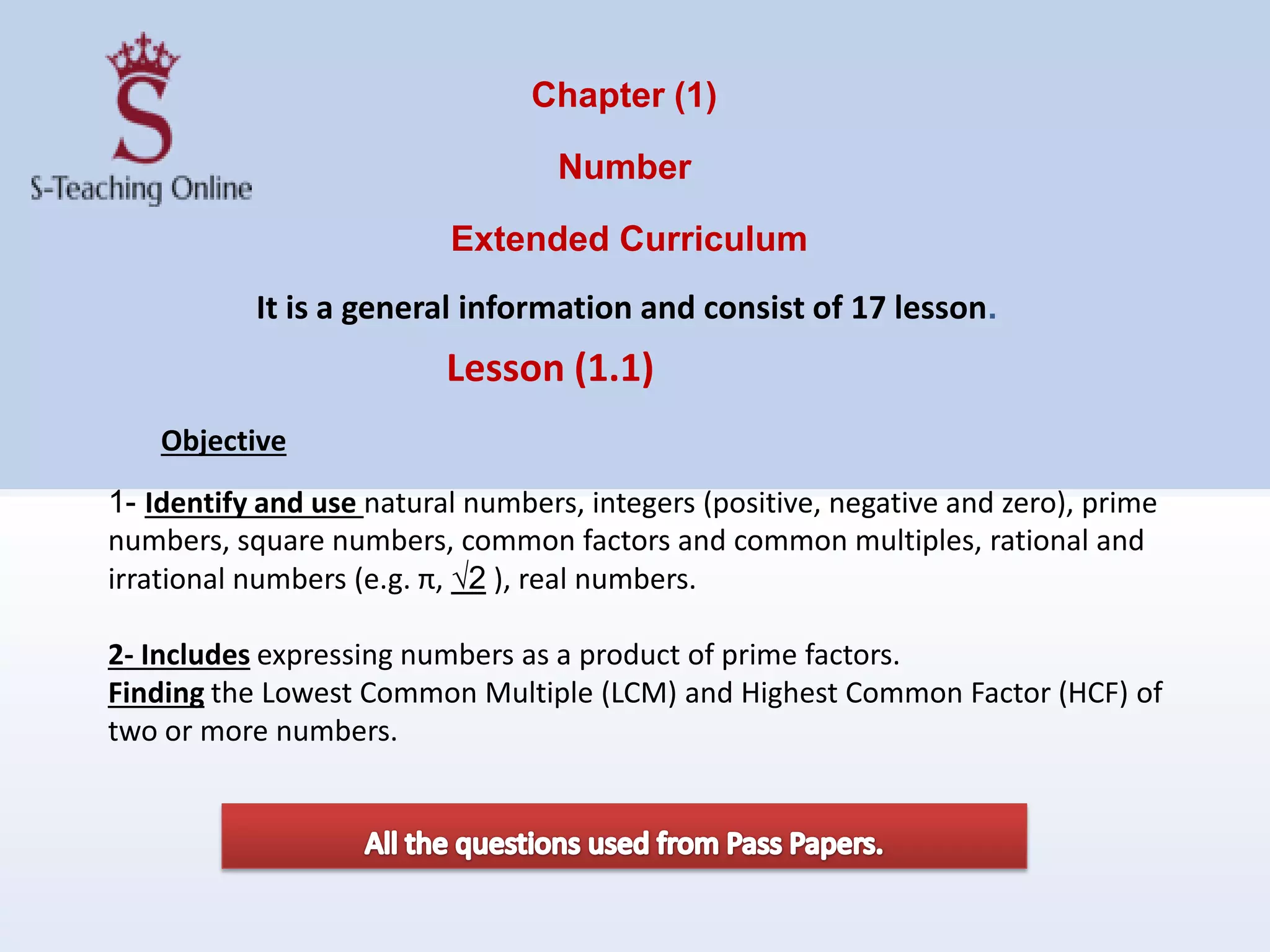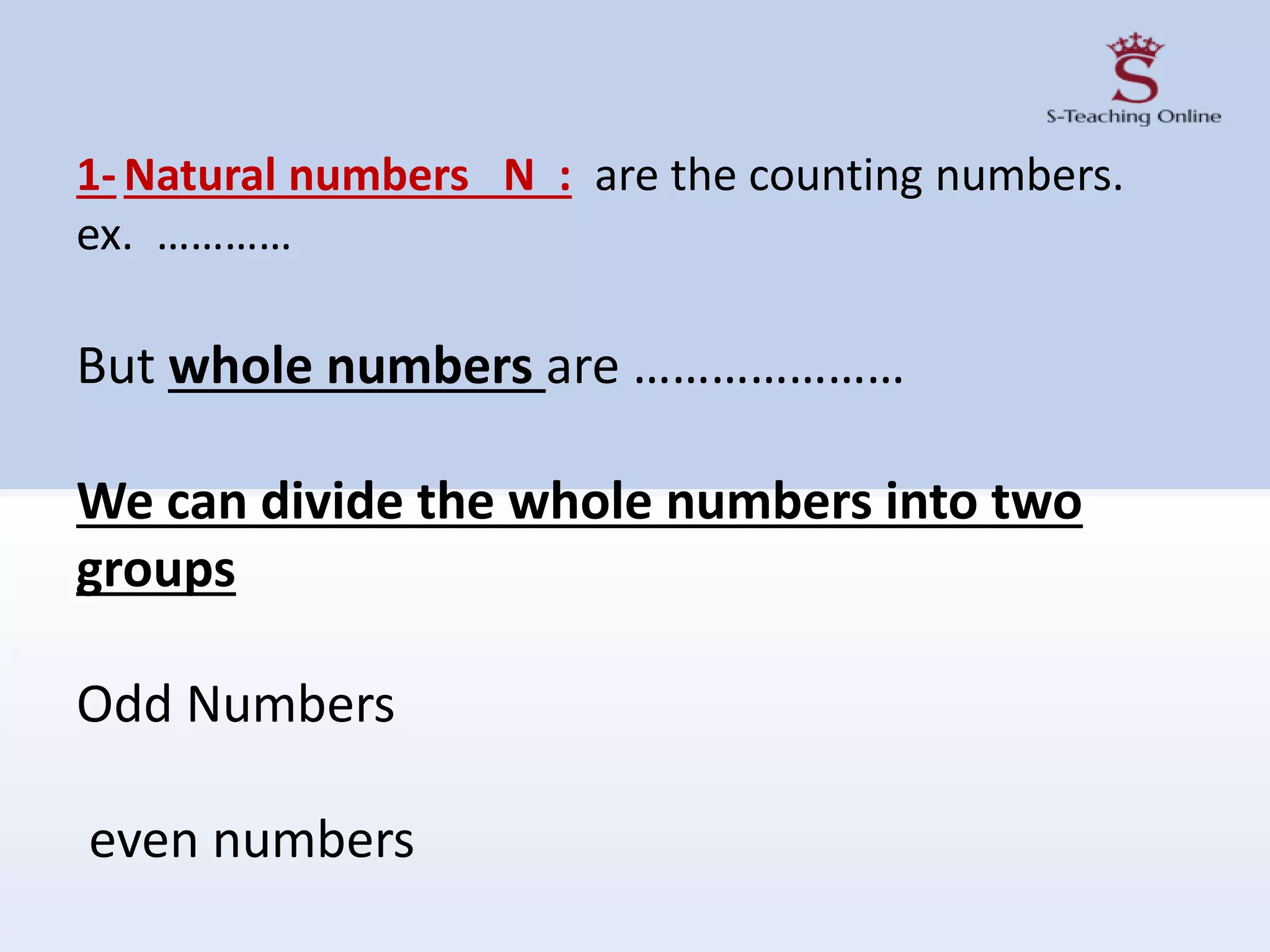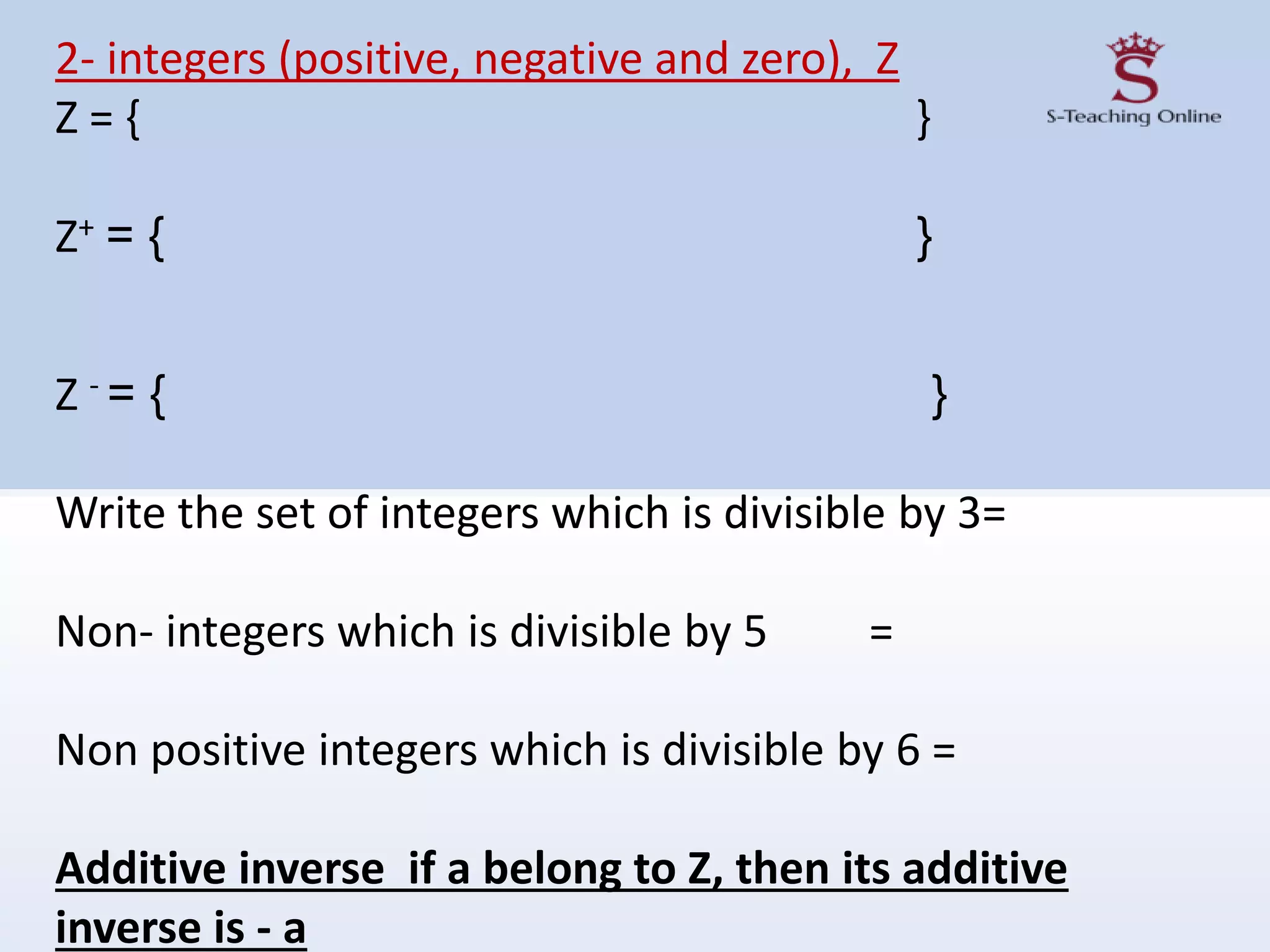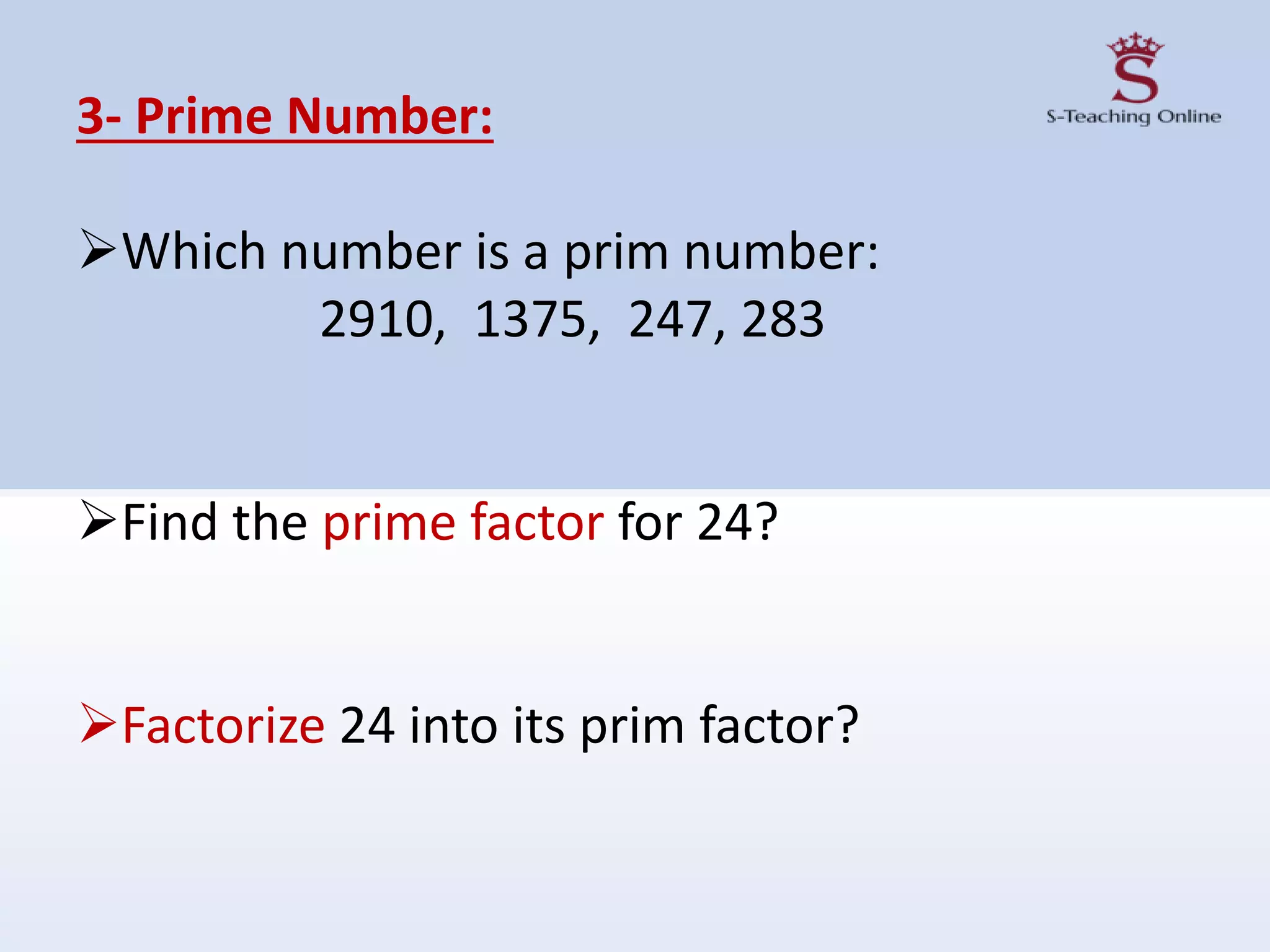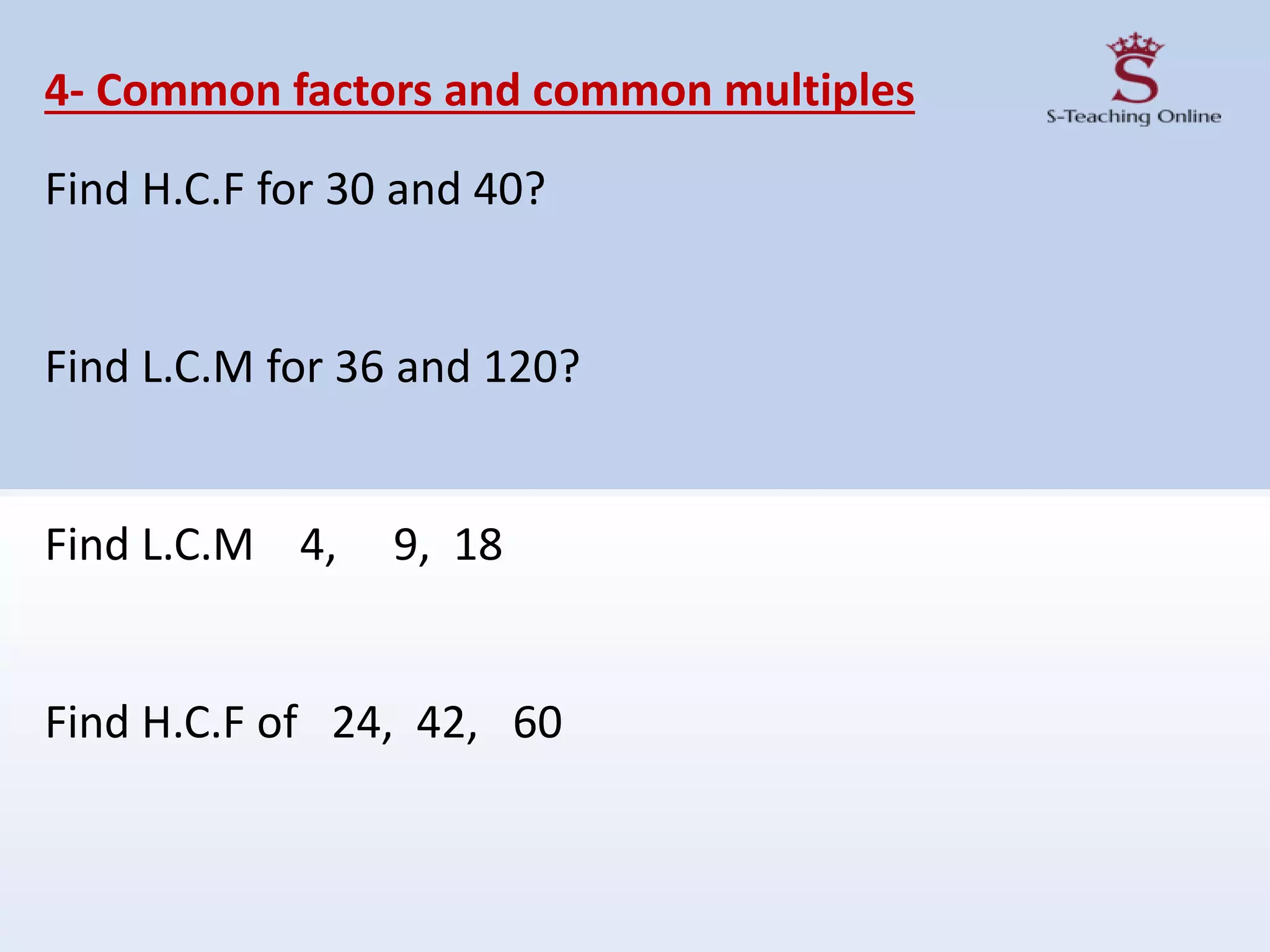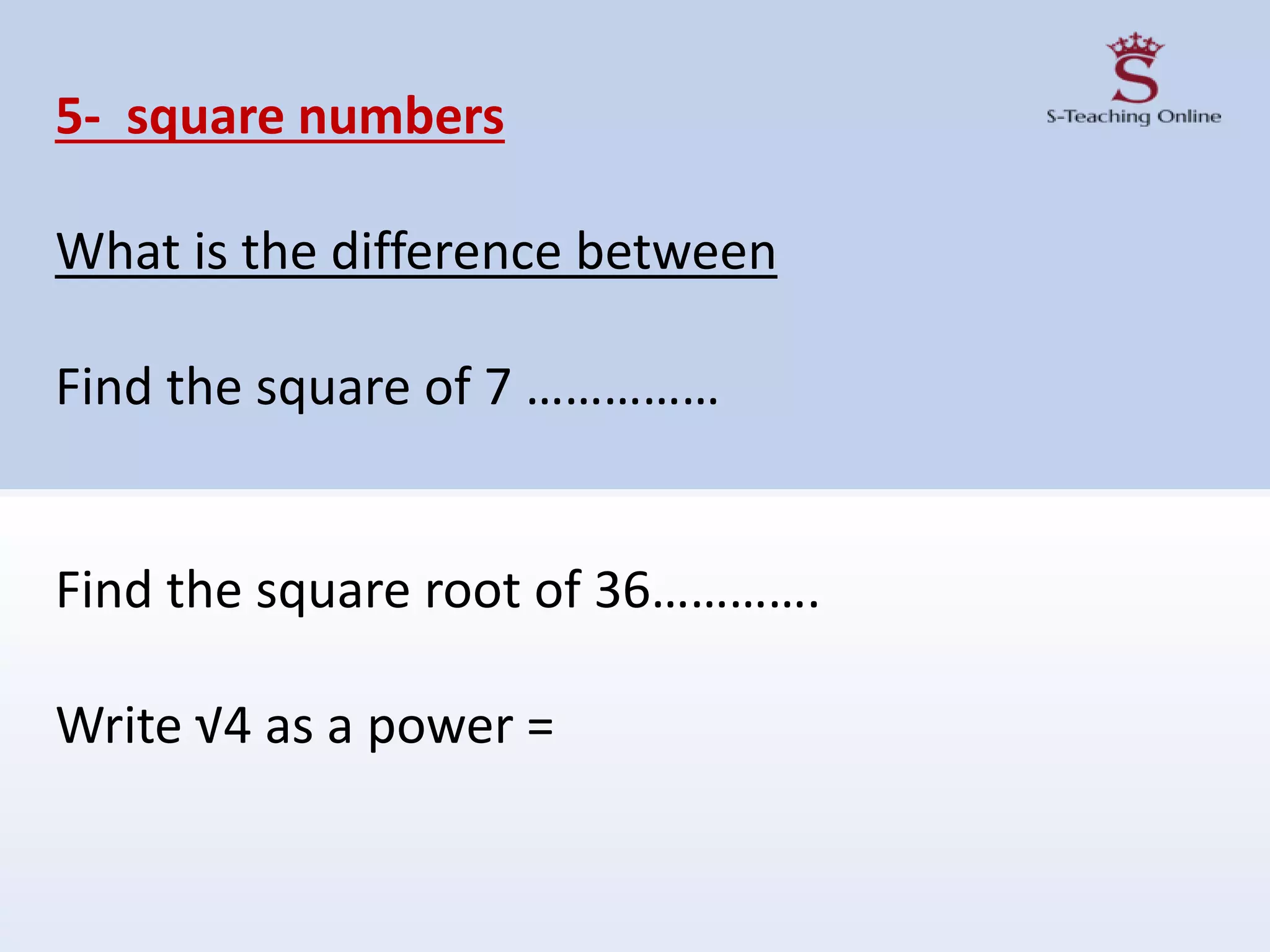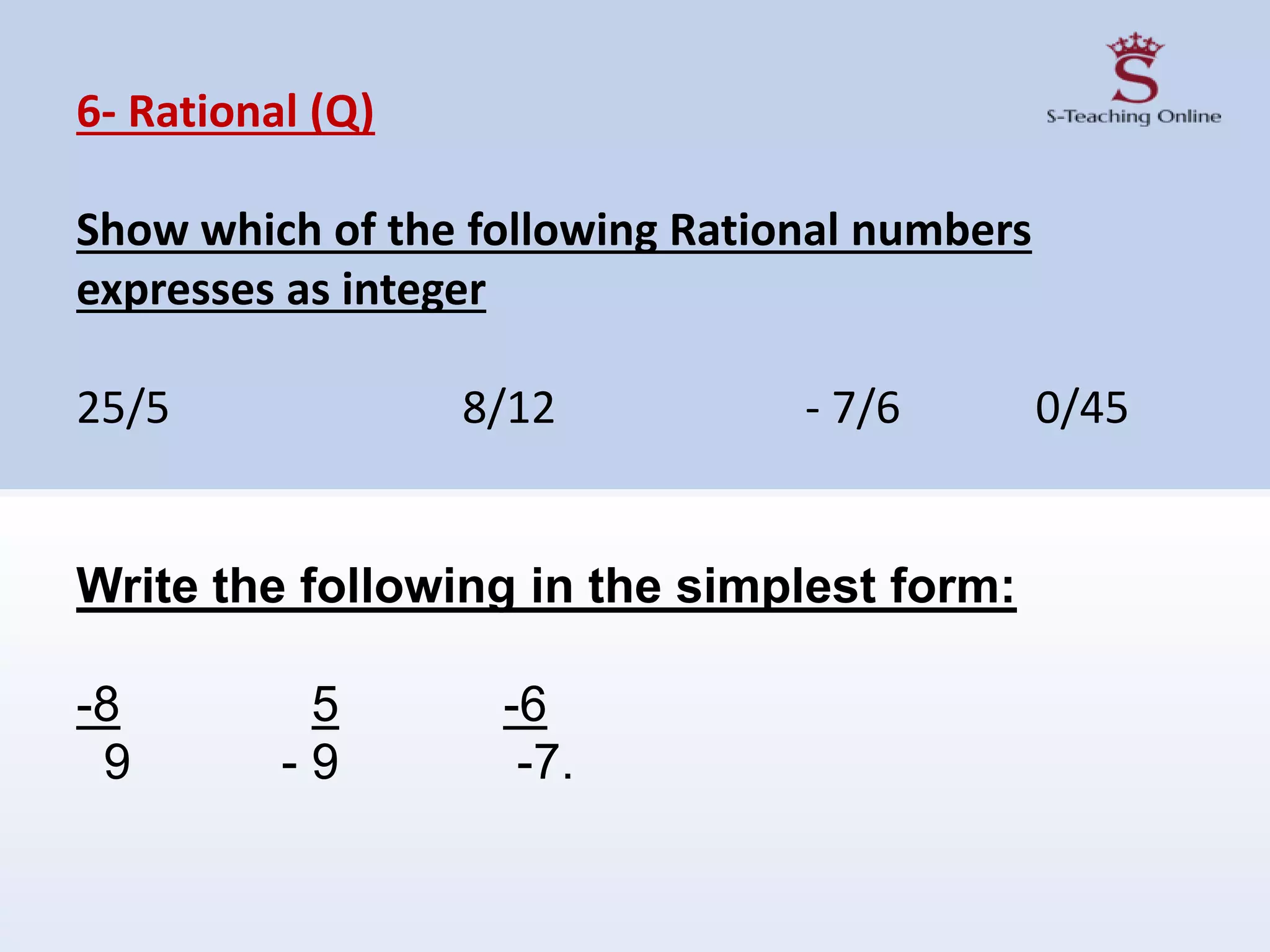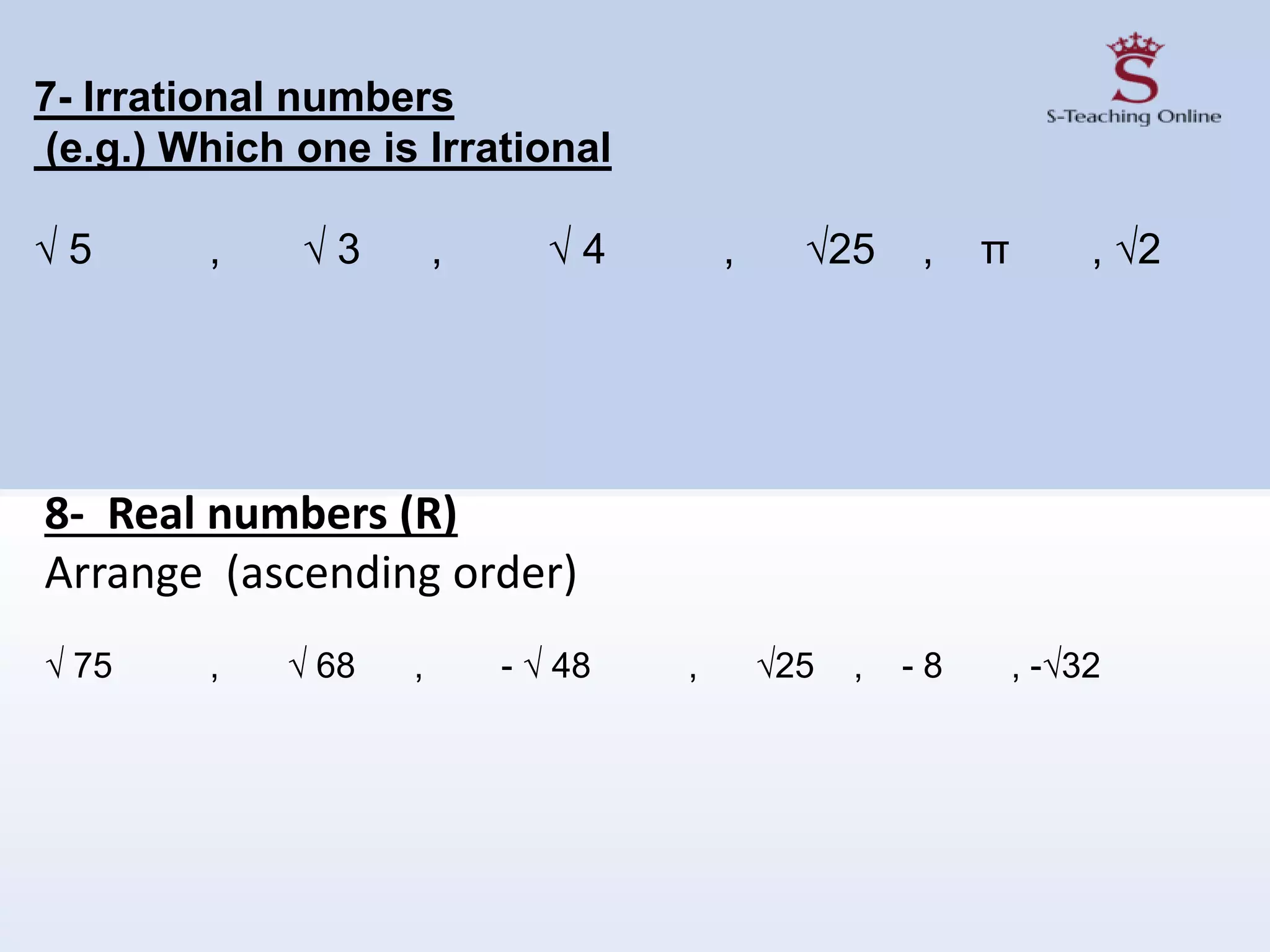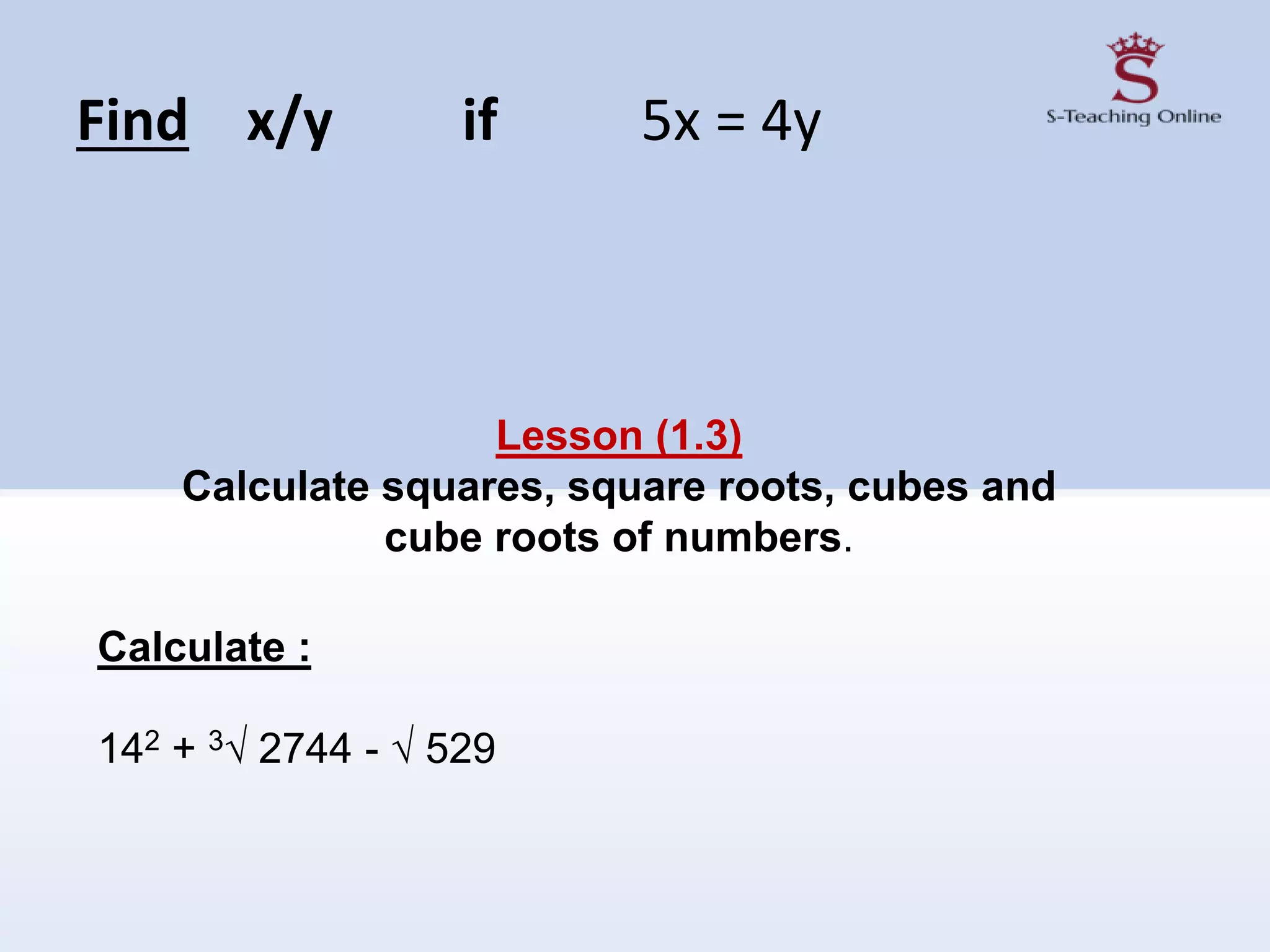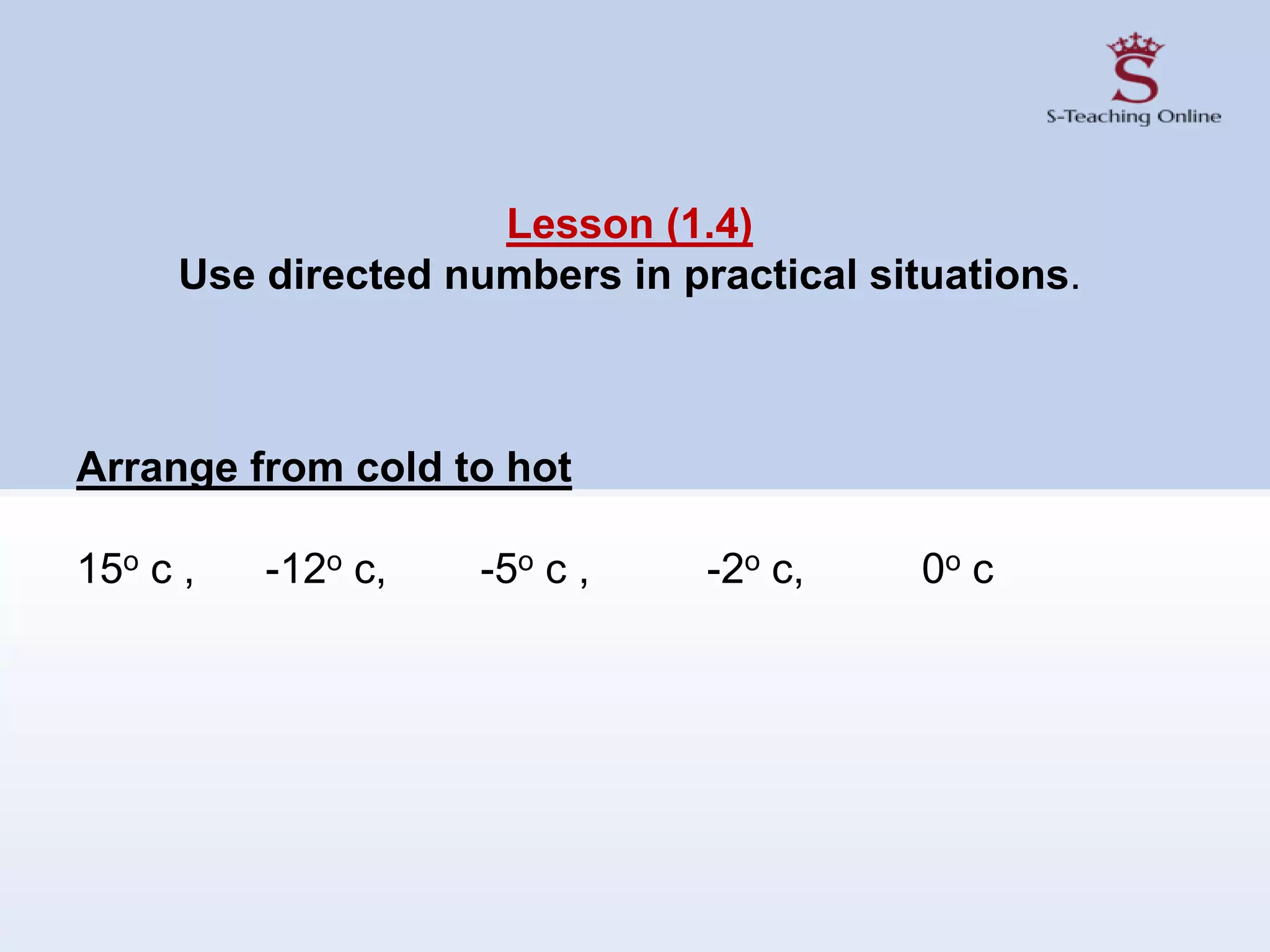This document provides a syllabus for the Cambridge IGCSE Mathematics exam. It outlines the topics that will be covered in the exam, including number, algebra, geometry, measurement, coordinate geometry, trigonometry, matrices, probability, and statistics. It describes the assessment objectives and their weightings.
The syllabus is divided into chapters that cover different areas of mathematics. Chapter 1 focuses on numbers, including natural numbers, integers, prime numbers, factors and multiples, rational and irrational numbers, and operations involving them. It provides examples and lessons on these number concepts.
